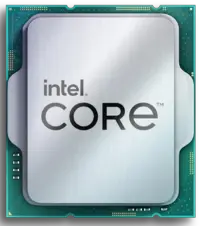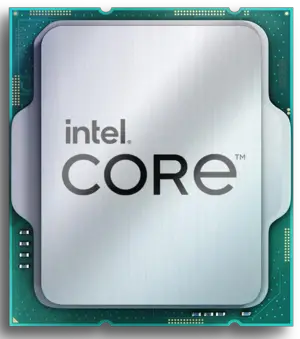(→Cache) |
|||
| Line 86: | Line 86: | ||
|l3 cache=24 MiB | |l3 cache=24 MiB | ||
|l3 break=8x3 MiB | |l3 break=8x3 MiB | ||
| + | }} | ||
| + | |||
| + | == Memory controller == | ||
| + | {{memory controller | ||
| + | |type=DDR5-5600 | ||
| + | |type 2=DDR4-3200 | ||
| + | |ecc=No | ||
| + | |max mem=128 GiB | ||
| + | |controllers=1 | ||
| + | |channels=2 | ||
| + | |max bandwidth=83.45 GiB/s | ||
| + | |bandwidth schan=41.72 GiB/s | ||
| + | |bandwidth dchan=83.45 GiB/s | ||
| + | }} | ||
| + | |||
| + | == Expansions == | ||
| + | {{expansions main | ||
| + | | | ||
| + | {{expansions entry | ||
| + | |type=PCIe | ||
| + | |pcie revision=5.0 | ||
| + | |pcie lanes=16 | ||
| + | |pcie config=1x16 | ||
| + | |pcie config 2=2x8 | ||
| + | }} | ||
| + | {{expansions entry | ||
| + | |type=PCIe | ||
| + | |pcie revision=4.0 | ||
| + | |pcie lanes=4 | ||
| + | |pcie config=1x4 | ||
| + | }} | ||
}} | }} | ||
Revision as of 23:18, 2 October 2022
| Edit Values | |
| Core i9-13900K | |
 | |
| General Info | |
| Designer | Intel |
| Manufacturer | Intel |
| Model Number | i9-13900K |
| Part Number | BX8071513900K, CM8071505094011 |
| S-Spec | SRMBH |
| Market | Desktop, Enthusiast |
| Introduction | September 27, 2022 (announced) October 20,2022 (launched) |
| Release Price | $589.00 (tray) $599.00 (box) |
| Shop | Amazon |
| General Specs | |
| Family | Core i9 |
| Series | i9-13000 |
| Locked | No |
| Frequency | 2,200 MHz, 3,000 MHz |
| Turbo Frequency | 5,800 MHz |
| Bus rate | 4 × 16 GT/s |
| Clock multiplier | 30 |
| Microarchitecture | |
| ISA | x86-64 (x86) |
| Microarchitecture | Raptor Lake, Raptor Cove, Gracemont |
| Chipset | 700 series |
| Core Name | Raptor Lake S |
| Core Family | 6 |
| Core Model | 183 |
| Core Stepping | B0 |
| Process | Intel 7 |
| Technology | CMOS |
| MCP | No (1 dies) |
| Word Size | 64 bit |
| Cores | 24 |
| Threads | 32 |
| Max Memory | 128 GiB |
| Multiprocessing | |
| Max SMP | 1-Way (Uniprocessor) |
| Electrical | |
| TDP | 125 W, 253 W |
| Packaging | |
| Package | FCLGA-1700 (LGA) |
| Dimension | 45.0 mm × 37.5 mm |
| Contacts | 1700 |
| Socket | Socket V |
| Succession | |
Core i9-13900K is a 64-bit tetracosa-core high-end performance x86 desktop microprocessor introduced by Intel in late 2022. This processor, which is based on the Raptor Lake microarchitecture, is manufactured on Intel's enhanced Intel 7 process. The i9-13900K is a heterogeneous multicore SoC integrating eight big Raptor Cove cores along with sixteen small Gracemont cores. The big cores operate at 3.0 GHz with a Turbo Boost frequency of up to 5.4 GHz, a Turbo Boost Max frequency of up to 5.7 GHz, and a Thermal Velocity Boost frequency of up to 5.8 GHz. The small cores operate at 2.2 GHz with a Turbo Boost frequency of up to 4.3 GHz. This processor has a base power of 125 W and a maximum turbo power of 253 W. This chip supports up to 128 GiB of dual-channel DDR5-5600 memory and incorporates Intel's UHD Graphics 770 IGP operating at 300 MHz with a burst frequency of 1.65 GHz.
At the time of its introduction, at 5.8 GHz peak frequency, the Core i9-13900K (along with its non-GPU variant, the Core i9-13900KF), became the world's highest-frequency commercial processor ever released, surpassing the prior record set by the Ryzen 9 7950X just a month earlier.
The i9-13900KF is an identical version of this chip without integrated graphics.
Cache
- Main article: Raptor Lake § Cache
This processor features 36 MiB of L3 cache shared among all the big cores and all the small core clusters.
Small Core
- Main article: Gracemont § Cache
|
Cache Organization
Cache is a hardware component containing a relatively small and extremely fast memory designed to speed up the performance of a CPU by preparing ahead of time the data it needs to read from a relatively slower medium such as main memory. The organization and amount of cache can have a large impact on the performance, power consumption, die size, and consequently cost of the IC. Cache is specified by its size, number of sets, associativity, block size, sub-block size, and fetch and write-back policies. Note: All units are in kibibytes and mebibytes. |
|||||||||||||||||||||||||||||||||||||
|
|||||||||||||||||||||||||||||||||||||
Big Core
- Main article: Raptor Cove § Cache
|
Cache Organization
Cache is a hardware component containing a relatively small and extremely fast memory designed to speed up the performance of a CPU by preparing ahead of time the data it needs to read from a relatively slower medium such as main memory. The organization and amount of cache can have a large impact on the performance, power consumption, die size, and consequently cost of the IC. Cache is specified by its size, number of sets, associativity, block size, sub-block size, and fetch and write-back policies. Note: All units are in kibibytes and mebibytes. |
|||||||||||||||||||||||||||||||||||||
|
|||||||||||||||||||||||||||||||||||||
Memory controller
|
Integrated Memory Controller
|
||||||||||||||
|
||||||||||||||
Expansions
Expansion Options |
|||||||||
|
|||||||||
| Has subobject "Has subobject" is a predefined property representing a container construct and is provided by Semantic MediaWiki. | Core i9-13900K - Intel#pcie + |
| base frequency | 2,200 MHz (2.2 GHz, 2,200,000 kHz) + and 3,000 MHz (3 GHz, 3,000,000 kHz) + |
| bus links | 4 + |
| bus rate | 16,000 MT/s (16 GT/s, 16,000,000 kT/s) + |
| chipset | 700 series + |
| clock multiplier | 30 + |
| core count | 24 + |
| core family | 6 + |
| core model | 183 + |
| core name | Raptor Lake S + |
| core stepping | B0 + |
| designer | Intel + |
| die count | 1 + |
| family | Core i9 + |
| first announced | September 27, 2022 + |
| first launched | October 20, 2022 + |
| full page name | intel/core i9/i9-13900k + |
| has ecc memory support | false + |
| has locked clock multiplier | false + |
| instance of | microprocessor + |
| is multi-chip package | false + |
| isa | x86-64 + |
| isa family | x86 + |
| l1$ size | 1,536 KiB (1,572,864 B, 1.5 MiB) + and 640 KiB (655,360 B, 0.625 MiB) + |
| l1d$ size | 512 KiB (524,288 B, 0.5 MiB) + and 384 KiB (393,216 B, 0.375 MiB) + |
| l1i$ size | 1,024 KiB (1,048,576 B, 1 MiB) + and 256 KiB (262,144 B, 0.25 MiB) + |
| l2$ size | 16 MiB (16,384 KiB, 16,777,216 B, 0.0156 GiB) + |
| l3$ size | 12 MiB (12,288 KiB, 12,582,912 B, 0.0117 GiB) + and 24 MiB (24,576 KiB, 25,165,824 B, 0.0234 GiB) + |
| ldate | October 20, 2022 + |
| main image |  + + |
| manufacturer | Intel + |
| market segment | Desktop + and Enthusiast + |
| max cpu count | 1 + |
| max memory | 131,072 MiB (134,217,728 KiB, 137,438,953,472 B, 128 GiB, 0.125 TiB) + |
| max memory bandwidth | 83.45 GiB/s (85,452.8 MiB/s, 89.604 GB/s, 89,603.755 MB/s, 0.0815 TiB/s, 0.0896 TB/s) + |
| max memory channels | 2 + |
| microarchitecture | Raptor Lake +, Raptor Cove + and Gracemont + |
| model number | i9-13900K + |
| name | Core i9-13900K + |
| package | FCLGA-1700 + |
| part number | BX8071513900K + and CM8071505094011 + |
| release price | $ 589.00 (€ 530.10, £ 477.09, ¥ 60,861.37) + and $ 599.00 (€ 539.10, £ 485.19, ¥ 61,894.67) + |
| release price (box) | $ 599.00 (€ 539.10, £ 485.19, ¥ 61,894.67) + |
| release price (tray) | $ 589.00 (€ 530.10, £ 477.09, ¥ 60,861.37) + |
| s-spec | SRMBH + |
| series | i9-13000 + |
| smp max ways | 1 + |
| socket | Socket V + |
| supported memory type | DDR5-5600 + and DDR4-3200 + |
| tdp | 125 W (125,000 mW, 0.168 hp, 0.125 kW) + and 253 W (253,000 mW, 0.339 hp, 0.253 kW) + |
| technology | CMOS + |
| thread count | 32 + |
| turbo frequency | 5,800 MHz (5.8 GHz, 5,800,000 kHz) + |
| word size | 64 bit (8 octets, 16 nibbles) + |